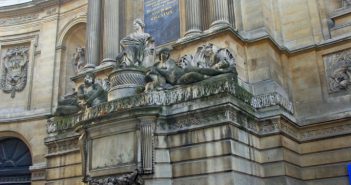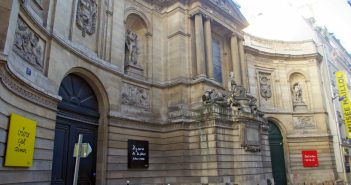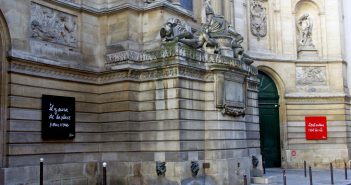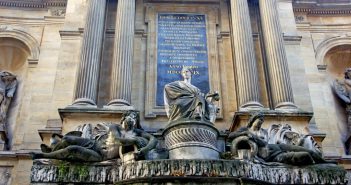You have to walk on the narrow street of rue de Grenelle in the 7th arrondissement of Paris to discover the Fontaine des Quatre-Saisons. This monumental public fountain is one of the best surviving examples of the public architecture of the reign of Louis XV in Paris. It is also a very odd one: richly decorated, it has never produced very much water!
The construction of the Fontaine des Quatre-Saisons
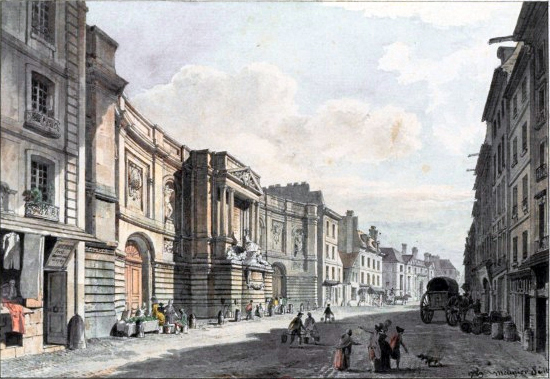
The fountain was built by Edme Bouchardon (1698-1762) who was the royal sculptor of King Louis XV.
It took 6 years for the fountain to be completed (1739-1745). Out of the 30 fountains built in the 18th century in Paris, the Fontaine des Quatre-Saisons was by far the largest and the most beautiful. A masterpiece of the 18th century.
The monumental fountain is richly decorated. You would think that for this fountain size, water must flow generously… It has never been the case since its completion. It only has four water spouts which do not produce very much water. The reason is quite simple and we have to travel South of Paris to understand why. In the 18th century, only one aqueduct delivered drinking water to the entire Left Bank (Latin Quarter and St. Germain-des-Prés). Known as the Aqueduct of Arcueil, it brought water from the vicinity of Rungis. First, the water was led to supply the Saint-Michel fountain. A secondary pipe led the remaining flow to the Fontaine des Quatre-Saisons. The upper part of the fountain was used as a water storage. Water then flowed by gravity down to the four small spouts. What a journey!

Local residents collected the water in vessels. The porteurs d’eau (water porters) made their business by delivering the water to the residents of the Faubourg Saint-Germain. The fountain was disused by the end of the 19th century and restored by the City of Paris in 1978.
Voltaire’s not happy about the fountain!
Despite its size, it is interesting to note that the huge fountain was not placed on a major road or square, unlike the Saint-Michel fountain. Still today the fountain looks disproportional to its surroundings. In 1739 Voltaire himself criticized the project and wrote in a letter to the Count of Caylus:
I have no doubt that Bouchardon will make of this fountain a fine piece of architecture; but what kind of fountain has only two faucets where the water porters will come to fill their buckets? This isn’t the way fountains are built in Rome to beautify the city. We need to lift ourselves out of taste that is gross and shabby. Fountains should be built in public places, and viewed from all the gates. There isn’t a single public place in the vast faubourg Saint-Germain; that makes my blood boil. Paris is like the statue of Nabuchodonosor, partly made of gold and partly made of muck.
The two purposes of the fountain
The obvious role of the fountain was to provide drinking water to the residents living around it. Known as Faubourg Saint-Germain, this area grew considerably during the 18th century. The French high nobility started to move there from the older district of the Marais. Many built their urban mansions (hôtels particuliers) in an area found between the Invalides and Saint-Germain-des-Prés. The second role of the Fontaine des Quatre-Saisons was to convey the good reputation of the king. Louis XV was then portrayed as a benevolent monarch to the people of Paris.
The façade of the Fontaine des Quatre-Saisons
The monumental fountain resembles the façade of a palace built in Classical style. It is more than 11 metres tall and 29 metres long. The façade shows an abundance of statuary or decorative figures that were created by Bouchardon.
The central part of the fountain

Between the two wings, the fountain features a slightly protruding part flanked by ionic columns and topped with a triangular pediment featuring the arms of France.
Above the base is a woman seated on a throne placed on a circular base. The statue in marble represents the City of Paris. She is richly dressed, and her attitude is inspired by her majesty. She holds the prow of a vessel in one hand, on which she is resting; her other arm is back, resting on her side, and on her head she wears a crown.
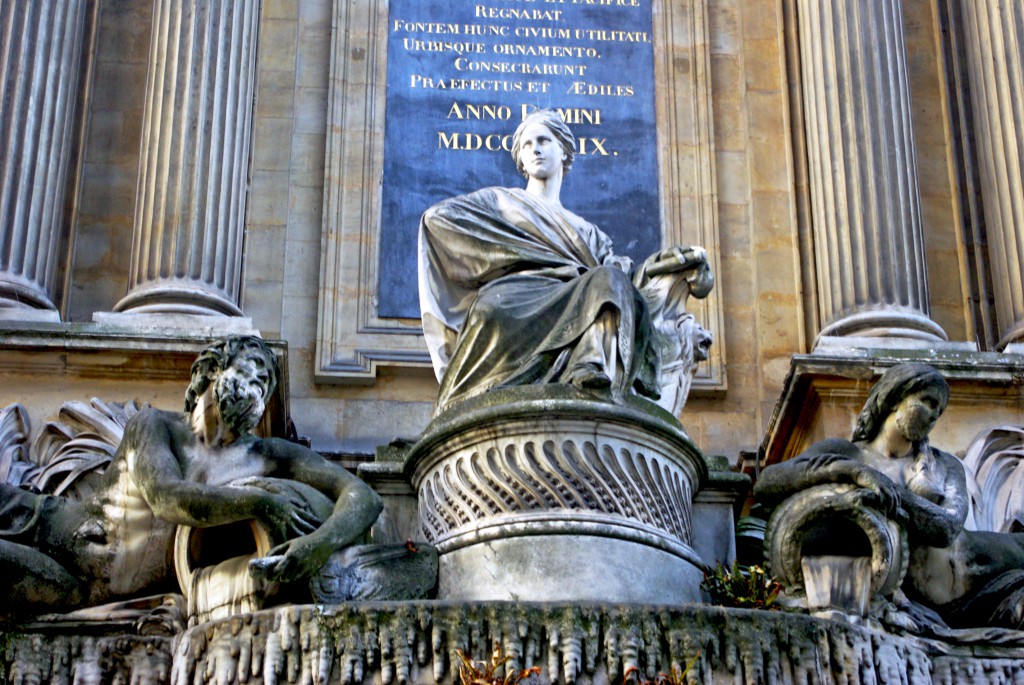
Flanking the woman on either side are two other figures, reclining. To the right the River Seine, who is looking at the City of Paris with a satisfaction mixed with surprise. To the left the River Marne, occupied by her care to spread her good works in the city, to procure abundance and to make commerce flourish.
Louis XV portrayed as a benevolent king to the Parisians
A Latin inscription in gold letters engraved in black marble was placed on the central part of the fountain, above the main statue. Written by the Cardinal de Fleury, who served as the King’s chief minister, it is still here today and reads:
DUM LUDOVICUS XV
POPULI AMOR ET PARENS OPTIMUS
PUBLICÆ TRANQUILLITATIS ASSERTOR,
GALLICI IMPERII FINIBUS,
INNOCUE PROPAGATIS,
PACE GERMANOS RUSSOSQUE
INTER ET OTTOMANOS
FELICITER CONCILITA,
GLORIOSE SIMUL ET PACIFICE
REGNABAT.
FONTEM HUNC CIVIUM UTILITATE,
URBISQUE ORNAMENTO.
CONSECRARUNT
PRAEFECTUS ET ÆDILES
ANNO DOMINI
M.DCC.XXXIX
(english translation) Whereas Louis XV, the object of the love of his people and excellent father, the support of public tranquility, after having recovered, without the flow of blood, the frontiers of the Kingdom of France, and since peace has been happily restored between the Germans and the Russians and the Subjects of the Ottoman Empire, ruling in a manner both glorious and peaceful; the Prevot des marchands and the ediles (town counselors) have devoted this fountain to the service of the citizens and to the beautification of the city in the course of the year 1739.
The left and right wings
Each wing consists of two niches with bas-relief figures representing “Les Génies des Seasons” (The spirit of the seasons). These young people with wings carry the fruits which appear in each season. Bouchardon’s intention was : “to show that the abundance which reigns in Paris does not suffer any interruption during the course of the year.” This explains the name of the fountain: Fontaine des Quatre-Saisons = fountain of the Four Seasons.

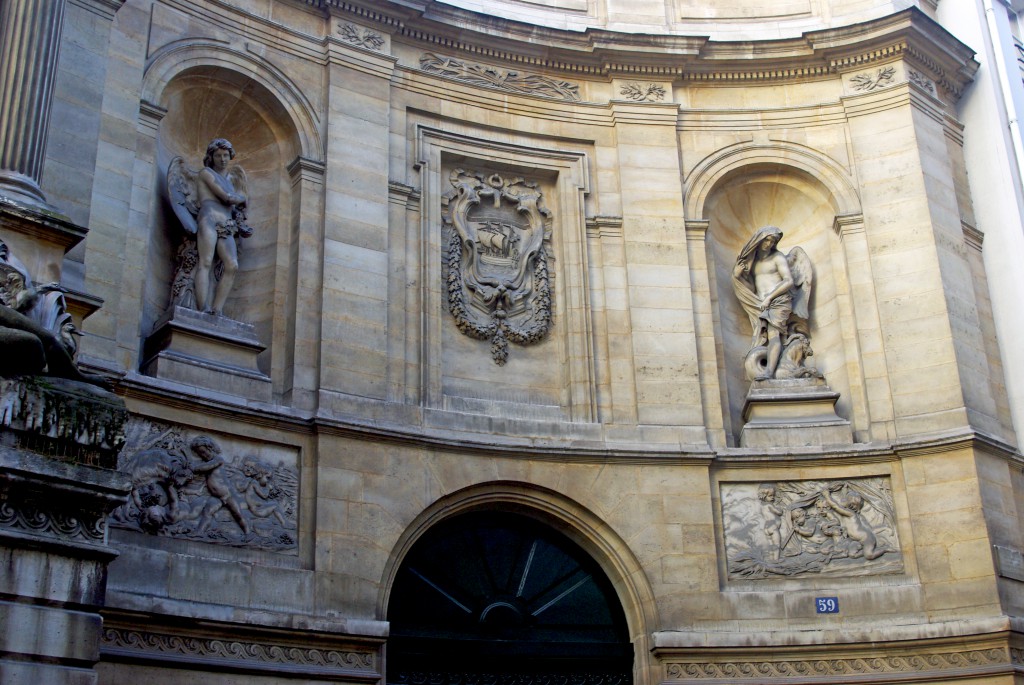
Below the niches, Bouchardon placed bas-reliefs in the empty spaces. They depict children working in the fields according to the seasons.
Above the two gates are the coat of arms of Paris. Have a closer look at their singular frames: they show a similar form to the mascarons which jet the water of the fountain.
The four water spouts
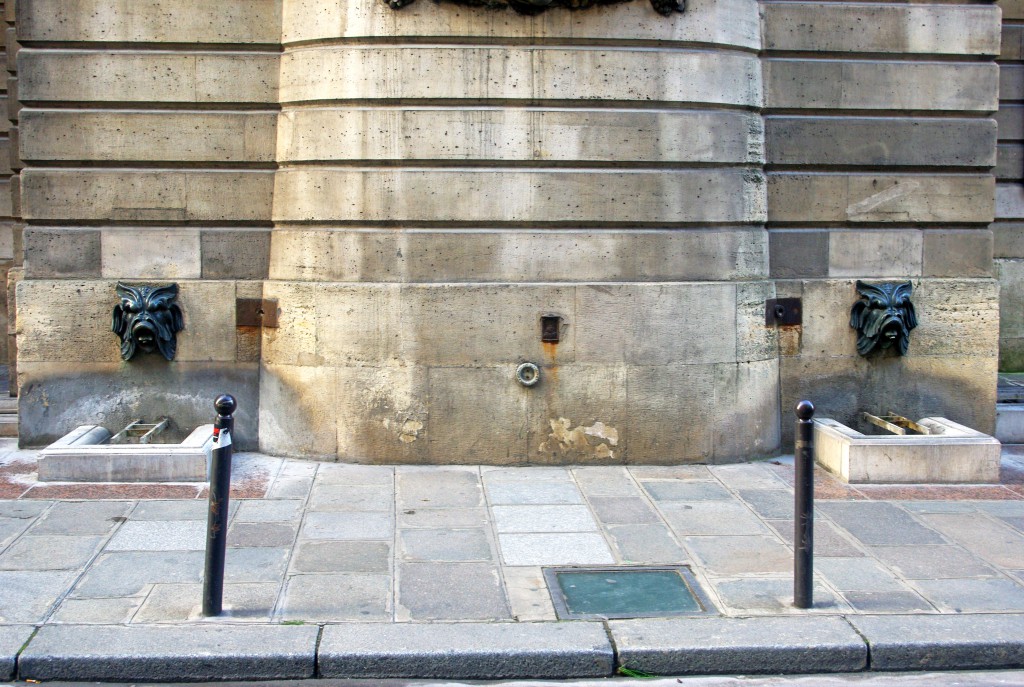
The four mascarons which jet the water of the fountain are made of bronze. There take the form of a lion or a monster head.
How to get there
- The fountain is located at 57-59 rue de Grenelle in the 7th arrondissement of Paris. Click here to locate the fountain on Google Map.
- The closest métro station is Rue du Bac (line 12).
Like what you’ve read? Subscribe to our blog by adding your email address to the form below.



